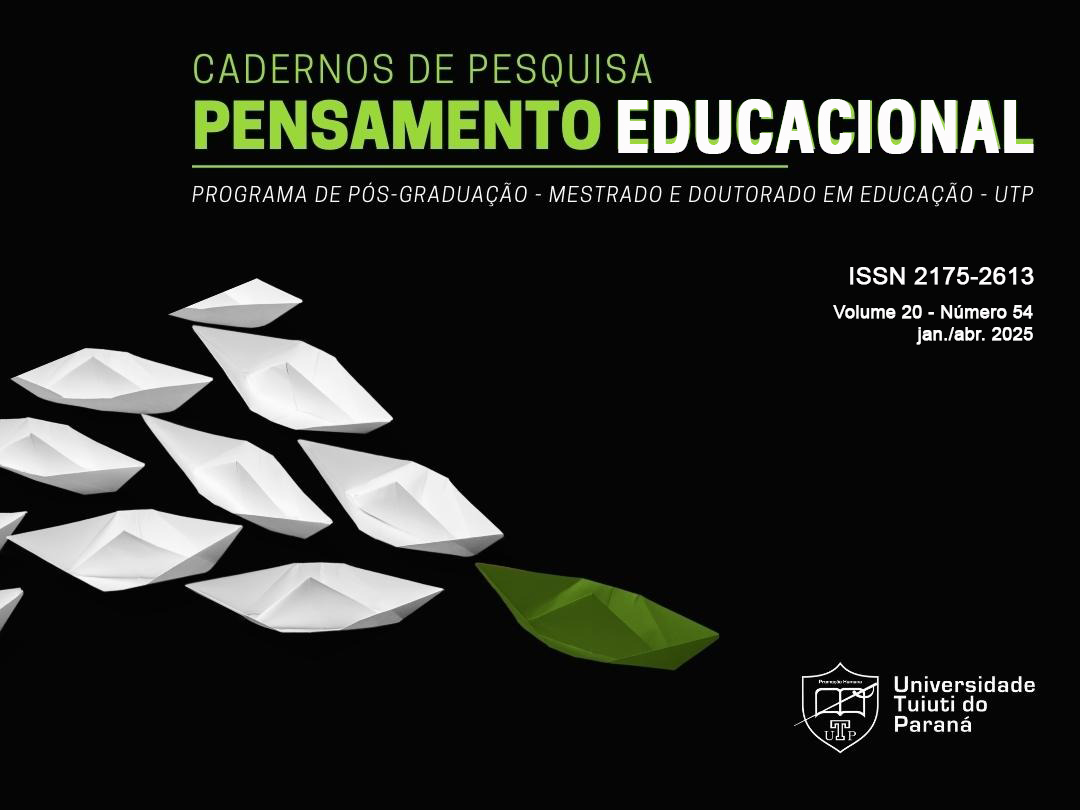El cine y el audiovisual estratégias didácticas para la enseñanza de la Historia en la educación secundaria: una aproximación teórica y práctica
Resumo
Este artigo analisa, sob uma perspectiva teórica e prática, o uso do cinema e de outros recursos audiovisuais como ferramentas de ensino de história no ensino médio. Entre os argumentos, destaca-se como o cinema facilita uma compreensão mais acessível e reflexiva do passado, promovendo o pensamento crítico, a construção ativa do conhecimento histórico e o desenvolvimento de habilidades digitais. Também são abordados os desafios do ensino de história e a importância de usar o cinema de forma estruturada e consciente, diferenciando o uso passivo e ativo de mídias audiovisuais em sala de aula. Além disso, são apresentadas diversas metodologias para integração do cinema ao ensino, desde a simples exibição até a produção de conteúdo pelos alunos. O artigo também descreve as diferenças entre o cinema e a mídia audiovisual, destacando a versatilidade da mídia audiovisual no contexto educacional. Estão incluídos exemplos de boas práticas e experiências concretas em que o filme foi usado efetivamente para ensinar história, promovendo a alfabetização audiovisual e o pensamento crítico. Por fim, conclui-se que o cinema e o audiovisual, quando utilizados de forma crítica e estruturada, podem transformar o ensino de História, promovendo uma educação mais conectada à realidade sociocultural dos alunos e desenvolvendo suas capacidades analíticas e críticas.
Copyright (c) 2025 Ilaria Bellatti

This work is licensed under a Creative Commons Attribution-NonCommercial 4.0 International License.
- Autores mantém os direitos autorais e concedem à revista o direito de primeira publicação, com o trabalho simultaneamente licenciado sob a Licença Creative Commons* que permite o compartilhamento do trabalho com reconhecimento da autoria e publicação inicial nesta revista.
- Autores têm autorização para assumir contratos adicionais separadamente, para distribuição não-exclusiva da versão do trabalho publicada nesta revista (ex.: publicar em repositório institucional ou como capítulo de livro), com reconhecimento de autoria e publicação inicial nesta revista.
- Autores têm permissão e são estimulados a publicar e distribuir seu trabalho online (ex.: em repositórios institucionais ou na sua página pessoal) a qualquer ponto antes ou durante o processo editorial, já que isso pode gerar alterações produtivas, bem como aumentar o impacto e a citação do trabalho publicado (Veja O Efeito do Acesso Livre).
- Esta revista proporciona acesso público a todo o seu conteúdo, uma vez que isso permite uma maior visibilidade e alcance dos artigos e resenhas publicados. Para maiores informações sobre esta abordagem, visite Public Knowledge Project.

*Esta obra está licenciado com uma Licença Creative Commons Atribuição-NãoComercial 4.0 Internacional.


